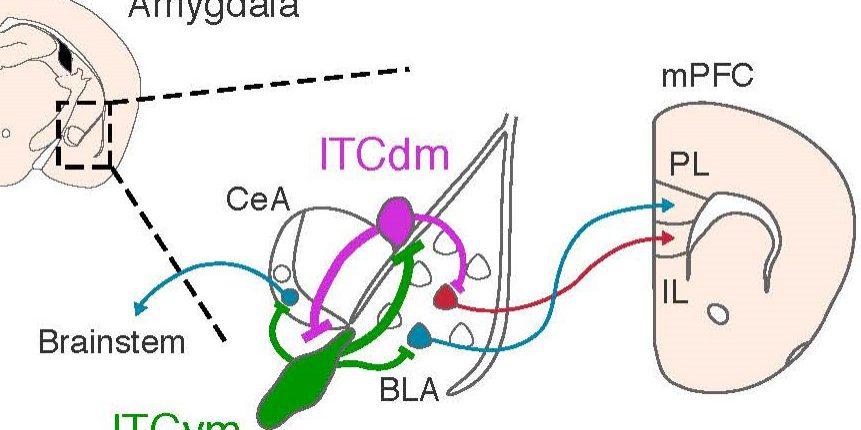Two clusters of brain cells compete to promote either the persistence or disappearance of traumatic memories, according to a new study conducted in mice. The findings could provide important insights into human conditions such as post-traumatic stress disorder (PTSD), anxiety disorders, and associated problems such as alcohol use disorder (AUD) that can arise from the persistence of traumatic memories. The new research, led by scientists at the National Institute on Alcohol Abuse and Alcoholism (NIAAA), part of the National Institutes of Health, and their colleagues in Switzerland, is reported in the journal Nature.
“Over time, the distress of having experienced trauma will subside for some people, as memories of the trauma cease to provoke a fearful response,” says NIAAA Director Dr. George F. Koob. “For other people who have experienced trauma, however, the fearful memories persist, and can adversely affect their ability to engage in everyday activities. These fearful memories can continue even though a person may repeatedly encounter cues associated with a traumatic experience without harm. The current study sheds light on the specific neural circuits that may underlie the persistence and the extinction of fearful memories associated with trauma.”
Scientists led by Andrew Holmes, Ph.D., chief of NIAAA’s Laboratory of Behavioral and Genomic Neuroscience, examined clusters of neurons, known as intercalated cells or ITCs, that are packed tightly around the mouse amygdala. Found deep within the temporal lobes of mammals’ brains, the amygdala is well-known as a hub for processing emotions. It is therefore a likely actor in the brain systems that underlie the formation of fearful memories associated with certain environmental cues and the successful extinction of those memories when the same cues later predict no harm.


